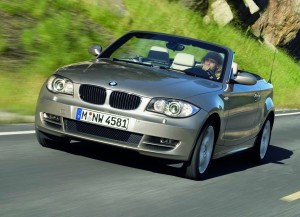Mention the word, Autobahn, and most folks immediately conjure up images of high-performance sports cars racing along at speeds that would land an American driver behind bars.
That may soon change. Voters in Badem-Wurttemberg have just elected the Green party to power, a bit of a surprise considering that the German state includes the city of Stuttgart, home to automakers Porsche and Mercedes-Benz, two manufacturers whose products define the idea of the Autobahn.
The Greens are expected to press through on one of their campaign promises, which would set a limit on Autobahn speeds in Badem-Wurttemberg, most likely to 120 kilometers an hour, or 75 mph. The primary reason is CO2 emissions, explained Winfried Kretschmann, who may soon be named the state’s new premier.
The transportation sector, he said on the Green’s website, “has to make a contribution of its own to reduce this gas that’s harmful to the environment.”
Once a fringe party, the Greens continue to become a more and more powerful force in German politics, and are pressing for similar restrictions across Germany. But the reality of the situation is that the Autobahn most folks think of has long since vanished.
Today, about 55% of the 7,600-mile German freeway system is subject to local or conditional speed limits. On the 300-mile stretch of the A2 Autobahn from former capitol Bonn to today’s German capitol of Berlin the maximum speed is 100 kmh, or barely 62 miles per hour, lower than most of the freeways in the U.S.
The Autobahn system was originally conceived by Conrad Adenauer, then the Lord Mayor of Cologne and later the Chancellor of West Germany. The first stretch opened in August 1932, but the major effort began only after the end of the Second World War.
The idea of opening up the road to high-performance cars was embraced almost from the start. A straight section from Frankfurt to Darmstadt, the first stretch to open, was used for testing and high-speed record attempts by the Mercedes-Benz and Auto Union racing teams.
Rudolf Caracciola set a world record of 268 mph on the Frankfurt to Darmstadt run, though formal race testing ended with the fatal crash of driver Bernd Rosemeyer in 1938.
The American interstate system owes a debt to the Autobahn system; ironically former Pres. Dwight Eisenhower lobbied for the limited-access road network after recognizing how effectively the Germans were able to move war materials around the country during WWII. The original U.S. road network was conceived as a way to do much the same thing, and many of the earliest freeways were designed specifically to permit the movement of such things as mobile rocket launchers.
In Germany, the debate over limiting Autobahn speeds has been raging for several decades. In 2007, the Social Democrats narrowly passed a referendum, at their party congress, calling for a top national speed of 130 kmh, or 80 mph. But with popular public support, proponents of lower speeds have been forced, so far, to chisel away one stretch of roadway at a time.
Voters aren’t the only ones concerned. Automakers fret that without the unlimited speeds of the Autobahn they might have a more difficult time maintaining their image of engineering leadership.
“We’re well advised to maintain the Autobahn sections that don’t have a speed limit,” said Daimler AG CEO Dieter Zetsche, who has warned that turning the Autobahn system into just another freeway network could eventually hurt sales for the German auto industry.

